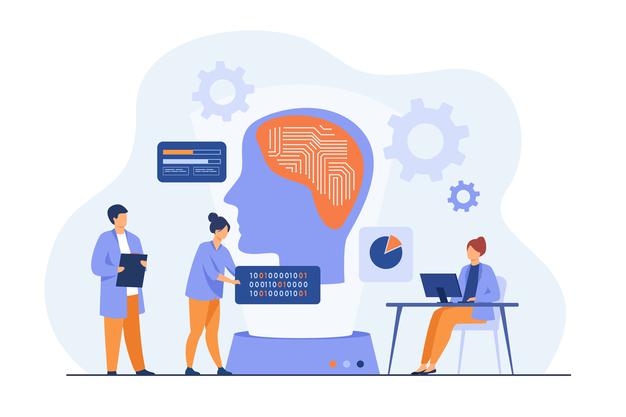A Guide To Natural Language Processing
Artificial intelligence or AI plays such a crucial role in today’s world that it is almost impossible to avoid conversations on the topic. While these discussions may look at the use of AI in day-to-day settings as well as processes like predictive analytics, questions may also be raised on language.
Data is often in human language, which a machine does not necessarily comprehend. How do these interactions take place, especially when programming machines are required to process and analyse large amounts of natural language data?
Natural language processing or NLP is the answer to these questions and it is described as a method of communicating with a machine using a natural language. The input and output of NLP can be in written text or speech and AI development company will make use of natural language processing in speech recognition and translation, understanding synonyms of matching words, and generating complete sentences and paragraphs.
You may see NPL implementation in speech engines, search engines, and spam filtering.
Terminology of Natural Language Processing
- When understanding NLP and its use by a machine learning consultancy, it is important to start with the basics. A guide to natural language processing begins with terminology.
- Tokenization is a word you will hear often in AI development company and it is an early step in the NLP process. Tokenization splits long strings of text into smaller pieces or tokens. If you take a large chunk of text, for instance, it can be split into sentences, which can then be split into words.
- While further processing usually only takes place after tokenization, normalization must also occur. This is a process that puts all text on the same level with the use of a series of tasks, giving the text a sense of uniformity. Normalizing text may include converting numbers to words, expanding contractions, and converting all text to upper or lower case.
- Stemming eliminates affixes from a word so that you get the word stem and lemmatization refers to the process of capturing a word’s canonical form. The further processing of text usually does not take place until stop words like ‘and’, ‘the’, and ‘a’ are removed.
- In terms of terminology, there is so much more one needs to be familiar with but these are some of the key words used in natural language processing.
Components of Natural Language Processing
- There are two key components of NLP. Natural language understanding or NLU maps the given input in natural language into useful representations and analyses different aspects of the language.
- Natural language generation or NLG involves test planning, sentence planning, and text realization and is the process of producing meaningful phrases in the form of natural language from an internal representation.
Steps of Natural Language Processing
- When using NLP, a data science consulting company will follow five basic steps. The process starts with lexical analysis, which is the identification and analysis of the structure of words. Parsing or syntactic analysis analyses the sentence for grammar and arranges the words so that the relationship among the words is made apparent.
- The third step is semantic analysis, which draws the exact meaning from the text and the fourth step is discourse integration. This step takes into consideration the fact that the sentence that precedes and the sentence that follows play a role in the meaning of a sentence.
- The final step to consider in natural language processing is pragmatic analysis. In this stage, the text is reinterpreted, with meaning derived from aspects of languages that rely on real world knowledge.
Importance of Natural Language Processing
Having a basic understanding of NLP leads to the question of its importance. Why do AI development companies use natural language processing?
- One of the key uses of NLP is with regard to large volumes of textual data. As mentioned above, NLP enables machines to understand data that is in a natural language. This means that, with NLP, a machine can read text and hear speech, interpret it, and determine which parts are important.
- Enabling machines to carry out such tasks means that a machine can analyze language-based data in a consistent and unbiased way but also at a faster speed than humans. This is vital given the current uses of data and the large volumes organizations deal with.
- This efficiency and accuracy afforded by NLP is one of the key reasons it is of importance to a machine learning consultancy.
- In addition to this, a data science consulting company may use natural language processing to structure highly unstructured data sources like speech recognition and text analytics.
